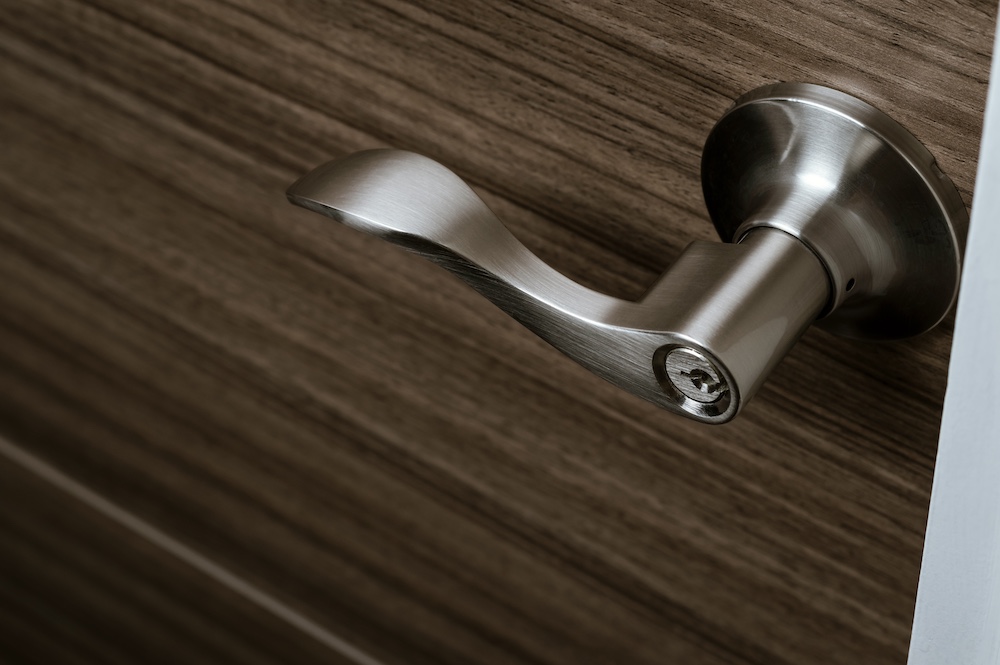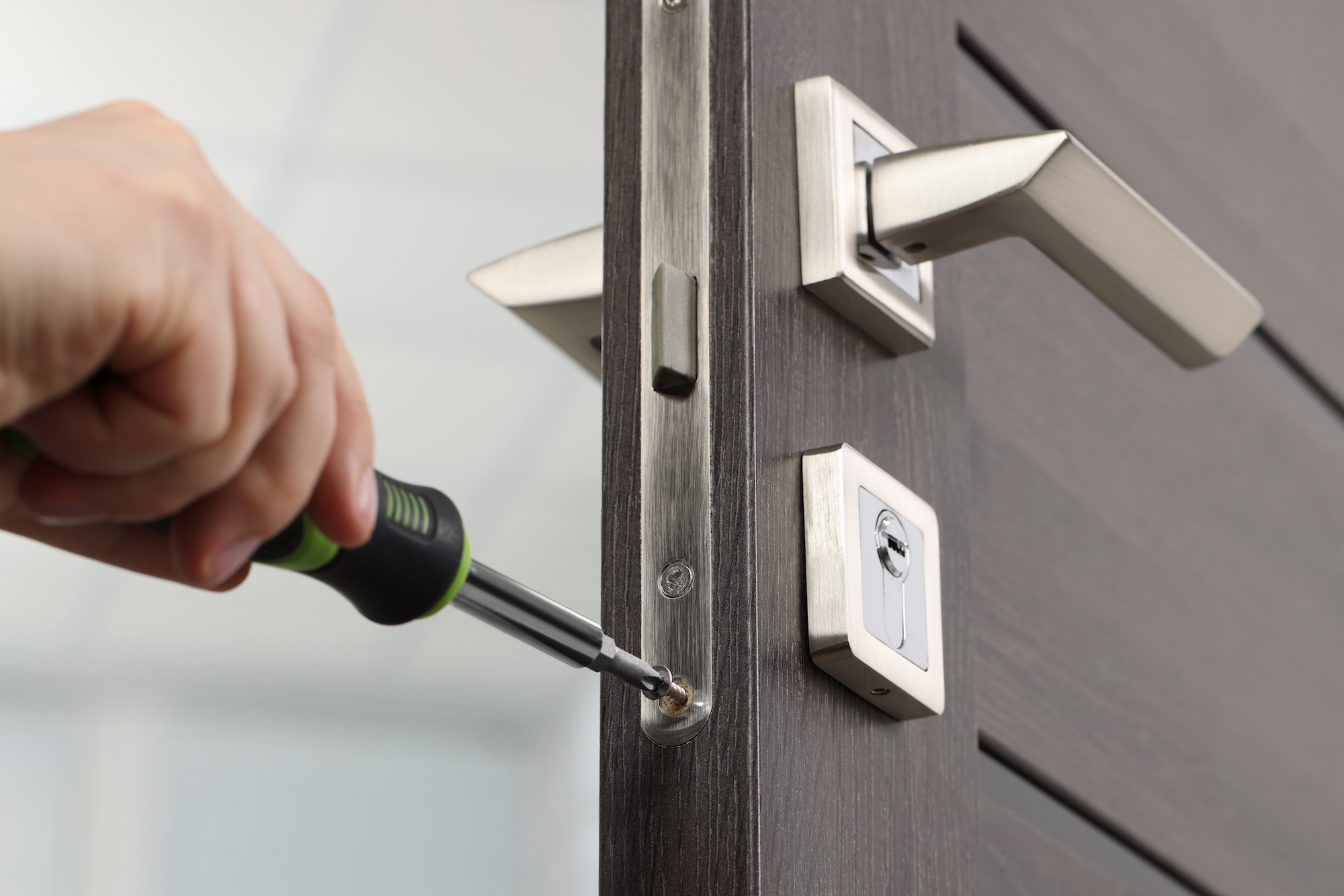What You Need To Know About ADA Door Hardware Ratings

Understanding ADA Compliance
According to the ADA National Network, the Americans with Disabilities Act (ADA) is a civil rights law that prohibits discrimination against individuals with disabilities in all areas of public life. This includes jobs, schools, transportation, and all places open to the general public.
Compliance Background
Before the ADA, many public spaces lacked the necessary accommodations for people with disabilities, prompting widespread advocacy for change. Disability rights advocates like Justin Dart tirelessly campaigned for more inclusive design, highlighting the daily obstacles faced by millions.
Their persistent efforts led to the establishment of the ADA, which set specific guidelines and requirements to improve accessibility across various sectors.
The ADA mandated changes in transportation, employment, and public services, ensuring that environments welcome everyone. These guidelines improved spaces, requiring modifications such as wider doorways and compliant restroom facilities. Additionally, the ADA emphasized the importance of clear signage, tactile indicators, and accessible pathways.
As a result of these measures, buildings now prioritize inclusivity, offering features like automated doors, ramps, and accessible parking spaces. By setting a standard for accessibility, the ADA improves physical environments and fosters a culture of inclusion and respect for individuals with disabilities.
Importance of Compliance
Compliance with ADA standards is not just about legal obligations; it's about creating environments where everyone can thrive. Noncompliance can result in fines, legal issues, and damage to a business's reputation.
ADA compliance offers numerous benefits, such as increased accessibility, better customer satisfaction, and enhanced safety for all building occupants. When businesses prioritize ADA compliance, individuals with disabilities gain greater independence and ease of access.

Overview of ADA Door Hardware
Understanding the different types of door hardware is essential for ensuring ADA compliance. Here are some common types:
- Handles: Lever handles require minimal effort and people can use them with a closed fist or an elbow, making them more accessible to people with limited hand dexterity.
- Locks: Accessible locks are operable with one hand and without tight grasping, pinching, or twisting. This includes features like push-button mechanisms or keyless entry systems that simplify access for individuals with disabilities.
- Door closers: These devices ensure the door closes automatically after opening, with adjustable closing speeds. This hardware prevents doors from slamming shut, reducing the risk of injury and ensuring that doors remain accessible to all users.
- Panic bars: This device allows individuals to exit a building quickly and safely during an emergency, even if they have limited mobility or strength.
General Requirements
ADA guidelines specify that operable parts of door hardware must be usable with one hand and require minimal effort. Users should not need to grasp tightly, pinch, or twist their wrists to operate the hardware.
Additionally, installers must mount the hardware at accessible heights to ensure everyone, including individuals in wheelchairs and those with varying physical abilities, can use it easily.
ADA Door Hardware Ratings Explained
An important thing you need to know about ADA hardware ratings is that they serve as a reliable benchmark for assessing the accessibility and compliance of door hardware products. The rating system classifies products based on their adherence to specific criteria.
Products that receive higher ratings typically excel in facilitating access for individuals with disabilities, offering ergonomic designs that reduce physical effort and optimize functionality.
Criteria for Ratings
- Ease of use: Lever handles are a prime example of user-friendly design. They require less force and dexterity to operate than traditional round knobs, making them more accessible to individuals with disabilities. Their design allows for smoother operation and reduces the physical strain on users.
- Height and reach requirements: ADA guidelines stipulate that installers should mount door hardware between 34 inches and 48 inches above the floor. This height range ensures that individuals in wheelchairs and those with limited reach can access the hardware.
- Force to operate: The maximum force for operating door hardware is generally five pounds. This requirement ensures that individuals with limited strength can use the doors without difficulty. Designing hardware with minimal operating force accommodates users with varying physical capabilities.
Examples of Rated Hardware
Several products in the market comply with ADA standards. For instance:
- Schlage AL Series Lever Lock: Known for its ease of use and compliance with height and force requirements, this lock combines security with accessibility.
- LCN 1460 Series Door Closer: Adjusts to various closing speeds and requires minimal force to operate. This door closer's flexibility and ease of adjustment make it suitable for a wide range of environments, from office buildings to healthcare facilities.
- Von Duprin 99 Series Exit Device: A compliant door exit device that ensures easy operation during emergencies. Its reliable performance makes it essential for maintaining safety in high-traffic areas.
Installation Best Practices
Proper installation is key to ensuring ADA compliance. As mentioned, install door hardware within the height range of 34 to 48 inches. Additionally, ensure that the hardware is easily reachable and operable without obstruction. Consistent placement across different doors within a facility helps create a predictable and user-friendly environment.
Common Mistakes to Avoid
Avoid common errors in door hardware installation by placing handles at the correct height and ensuring they require minimal force to operate. Additionally, make panic bars easy to reach and use. Installers should position door exit devices within the specified range and keep them free from obstructions to ensure both compliance and user safety.
One mistake to avoid is neglecting maintenance and adjustments of door hardware. Over time, hardware can become misaligned or worn, compromising its accessibility and functionality. Regularly inspecting and adjusting door closers, lubricating moving parts, and addressing wear and tear will help maintain compliance with ADA standards.

How To Choose the Right ADA-Compliant Hardware
When choosing ADA-compliant hardware, look for product reviews from trusted sources such as ADA compliance websites and customer feedback platforms. Working with knowledgeable professionals who specialize in ADA compliance can provide valuable insights and recommendations, too.
Staying updated with ADA guidelines is essential to maintaining compliance and addressing any changes in standards. Regularly review updates from ADA resources to understand new developments. This way, you can adapt to evolving guidelines and consistently provide an accessible environment for all users.
Let DoorHub Help
Take the first step toward compliance today. Review your current door hardware for ADA compliance and consider upgrades if necessary. DoorHub offers ADA-compliant hardware that meets accessibility standards and ensures ease of use and durability. Browse our selection today!

Author
Greg Richard
Chief Technical Officer and Founding Member of DoorHub.com